Text
IBM's Revised Development Roadmap For Quantum Computing - 2022 Update
What Is IBM's Quantum Computing Roadmap?
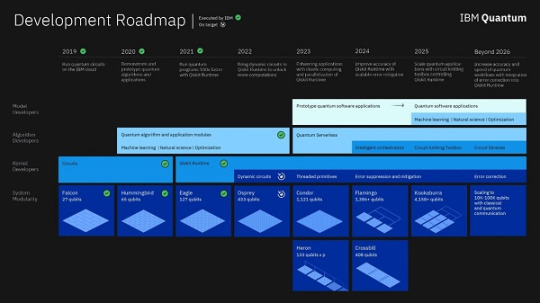
The most recent version of the IBM Quantum development plan through 2025 is presented by IBM Fellow and VP of Quantum Computing Jay Gambetta.
youtube
With the help of the Qiskit runtime, we now think we have what it takes to scale quantum computers into what we're calling quantum-centric supercomputers, making it simpler than ever for our customers to integrate quantum capabilities into their particular domains.
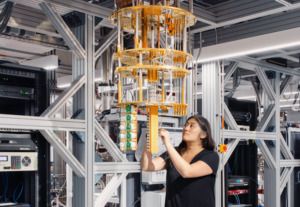
The IBM Quantum team introduces three new processors in this video that show scaling advancements by offering modularity, enabling multi-chip processors, classical parallelization, and quantum parallelization to construct bigger, more powerful systems.
What Is Quantum parallelism?
A quantum algorithm's initial step is creating a situation where each input value is associated with a matching output value.
This is known as "quantum parallelism," and it is sometimes credited as the reason why quantum computations are faster.
What Are Quantum Supercomputers?
Quantum computers are devices that store data and carry out calculations using the principles of quantum physics.
This may be quite helpful for certain jobs since they could accomplish them far better than our greatest supercomputers.
What Is Qiskit Runtime?
Users may efficiently execute jobs on quantum devices at scale using the programming language and service known as Qiskit Runtime.
The programming model adds a number of additional simple programs to the Qiskit interface.
What Are The Key Concepts Of Qiskit Runtime?
Primitives
Primitives are pre-written programs that provide a streamlined user interface for specifying the near-time quantum-classical workloads necessary to effectively create and modify applications.
Two primitives, Estimator and Sampler, are included in the Qiskit Runtime's first version.
They serve as a gateway to the Qiskit Runtime service and carry out fundamental quantum computing operations.
2. Sampler
This software creates an error-mitigated readout of quasiprobabilities using user circuits as input.
This gives users a means to more effectively assess the probability of numerous relevant data points in the setting of destructive interference and improves shot outcomes evaluation utilizing error mitigation.
3. Estimator
This software interface enables users to efficiently assess expectation values and variances for a given parameter input by taking circuits and observables and choosing grouping amongst circuits and observables for execution.
With the help of this basic, users may quickly compute and decipher the expectation values of quantum operators that are necessary for many algorithms.
What Is IBM Quantum's 4000 Qubit Processor?
IBM Quantum Aims for "Quantum-Centric Supercomputing," Promising 4,000-Qubit Processor in 2025.
At its Think 2022 conference, IBM announced its intention to build the "Kookaburra," a 4,000+ qubit processor made with several clusters of scaled quantum computing processors.
The revised quantum strategy was unveiled one year after IBM reiterated its commitment to producing a 1,121-qubit processor by 2023 in its most recent roadmap release at Think 2021.
With the Kookaburra 1,386-qubit multi-chip CPU, which will be released in 2025, the business has now increased the stakes by guaranteeing a roughly 4-fold increase in qubits.

Three Kookaburras will be able to join into a 4,158-qubit processor according to IBM's claim that it will have communications connection capability for quantum parallelization.
It's noteworthy to note that, while leaving the supercomputing systems market, IBM has made significant investments in the development of quantum systems, which have the potential to provide far more computing power than conventional supercomputers, at least for specific workloads.
The firm has a "plan to weave quantum processors, CPUs, and GPUs into a computational fabric capable of handling challenges beyond the realm of classical (HPC) resources alone," according to Jay Gambetta, vice president of IBM Quantum, in a blog post published.
Contrary to the popular belief that quantum would handle specialized tasks, complementing and standing alongside traditional supercomputing systems, combining quantum and classical HPC under one roof defies this notion.
According to Gambetta's blog, "in the last few years, we've witnessed the birth of AI-centric supercomputers, where CPUs and GPUs work together in massive systems to handle AI-heavy tasks." The era of the quantum-centric supercomputer is now being introduced by IBM, in which quantum resources, or QPUs, will be knitted together with CPUs and GPUs into a computational fabric.
We believe that the quantum-centric supercomputer will be a crucial piece of equipment for people tackling the most challenging challenges, doing the most innovative research, and creating the most cutting-edge technologies.
According to him, IBM is working on "new modular architectures and networking that will enable IBM quantum systems to have bigger qubit-counts—up to hundreds of thousands of qubits." They will be made possible by "a layer of more clever software orchestration to distribute workloads effectively and abstract away infrastructure issues."
According to IBM, this strategy will be supported by three pillars: scalable quantum hardware, quantum software to coordinate and allow accessible quantum programming, and a community of companies and communities prepared for quantum technology.
The Qiskit Runtime platform, together with its containerized quantum computing service and programming style, is a key component of IBM's plan.
IBM introduced Qiskit Runtime primitives earlier this year with the goal of encapsulating typical quantum hardware queries used in algorithms into interfaces.
According to IBM, these primitives will be expanded in 2023 to enable programmers to execute them on parallelized quantum computers to speed up user applications.
In 2020, IBM first revealed its quantum plan.
Since then, the corporation has released the IBM Eagle, a 127-qubit processor whose design, according to IBM, paved the way for processors with ever more qubits.
The IBM Eagle features quantum circuits that cannot be precisely reproduced on a conventional computer.
In addition, IBM claimed that their use of Qiskit Runtime had increased molecular simulation speed by 120x when compared to a 2017 trial.
IBM said that it anticipates achieving the previously stated goals on its roadmap later this year and introducing its 433-qubit processor, IBM Osprey.
In order to provide a serverless approach to the quantum software stack and provide developers with increased simplicity and flexibility, IBM said that it would create a frictionless development experience using Qiskit Runtime and workflows created in the cloud in 2023.
A crucial step toward attaining the intelligent and effective distribution of issues across quantum and classical systems will be made by this serverless technique.
For its quantum computers, IBM claimed to be aiming for three scaling regimes.
The first is developing the ability to classically communicate and parallelize activities over numerous processors, allowing a wider range of approaches for use in real quantum systems, such as workload orchestration and error-mitigating strategies.
According to IBM, the next stage includes short-range, chip-level couplers that join many processors to create a single, bigger processor and enable modularity, which is essential for scalability.
Quantum communication connections between quantum computers make up the third scalability factor.
In order to do this, the corporation said, "IBM has suggested quantum communication lines to join clusters together into a bigger quantum system."
~ Jai Krishna Ponnappan.
Find Jai on Twitter | LinkedIn | Instagram
References And Further Reading:
IBM Quantum - https://www.ibm.com/quantum-computing
#quantum#qiskit#serverless#supercomputer#quantum computer#quantum computing#Qiskit Runtime platform#IBM Eagle#quantum circuits#qiskit runtime#Youtube
0 notes
Text
Quantum Revolution's Use By The NQISRCs.
The NQISRCs are all committed to the promotion of quantum information science, despite having different specialties and resources.

The behavior of nature at the tiniest scales is being used by five National Quantum Information Science Research Centers (NQISRCs) to create technology for the most challenging issues in science.
The NQISRCs have supported the DOE's goal to advance the country's energy, economy, and national security since 2020 with funding from the Office of Science under the U.S. Department of Energy (DOE). The centers establish a vibrant environment for quantum innovation and co-design by creating a national quantum ecosystem and workforce made up of researchers from over 70 different universities throughout the United States.
The NQISRCs combine cutting-edge DOE facilities, top expertise at national labs and American colleges, and the innovative spirit of American technology businesses.
Because of this, the centers are expanding the realm of what is feasible in terms of quantum computers, sensors, devices, materials, and much more.
A DOE national laboratory oversees each national center:
Brookhaven National Laboratory is the Center for Quantum Advantage (C2QAprincipal )'s designer.
Argonne National Laboratory's Q-NEXT initiative
Leading the Quantum Science Center is Oak Ridge National Laboratory.
Lawrence Berkeley National Laboratory's Quantum Systems Accelerator (QSA)
Fermi National Accelerator Laboratory's Superconducting Quantum Materials and Systems Center (SQMS) is in charge of this project.
According to Q-NEXT Director David Awschalom, "Each center is a strong force for quantum information science on its own, pushing the boundaries of computers, physics, chemistry, and materials science to deliver transformative new technologies to the country."
But when they work together, they form a powerful national force that gives quantum science and engineering a unique place in the United States and positions it to lead the world in this area.
Quantum information science (QIS), a fast developing branch of study, looks at the quantum aspects of nature to provide new, potent methods to process information in fields as diverse as health, energy, and finance.
Researchers might create new, very precise sensors, powerful computers, and safe communication networks by modifying the most basic properties of matter.
In order to do this, the institutes are developing prototype quantum computers and sensors and evaluating their influence and performance on different technology platforms and architectural designs.
According to C2QA Director Andrew Houck, "there are numerous options and possibilities to be made in the development of quantum computing, and knowing how present devices fail indicates to us the road ahead."
Despite significant advancements in the area, the NQISRCs are able to complete this unexpectedly difficult job since contemporary quantum computers are still too noisy and error-prone to do effective calculations.
In order to get over these noise restrictions and create devices with a quantum advantage, it is essential to understand the quantum behavior of materials.
The national labs are in a unique position to provide cutting-edge resources and expertise that direct the comprehension and removal of these constraints.
According to SQMS Director Anna Grasselino, "DOE has invested for years in state-of-the-art technology, techniques, and facilities at national laboratories, which provide unique prospects to allow a jump in performance of quantum devices."
Especially since QIS can promote our aim of comprehending the universe at its most basic level, we are thrilled to provide world-leading knowledge to achieve revolutionary improvements in QIS.
To provide the groundwork for future scientific breakthroughs, the multidisciplinary teams at the NQISRCs jointly build quantum technologies.
New materials and potent quantum sensors that, when paired with medical imagers, might detect tissue at the individual-cell level and provide far higher sensitivity to today's magnetic resonance imaging equipment are just two examples of how advances in QIS can benefit society as a whole.
The co-design effort across the NQISRCs might result in quicker medication and vaccine development, innovative materials, advances in transportation and logistics, and more secure financial networks by comprehending what enables and limitations various quantum technologies and what tools need to be created.
NQISRC researchers utilize top-tier DOE Office of Science user facilities and programs as a national ecosystem, including the Advanced Photon Source at Argonne National Laboratory, the Oak Ridge Leadership Computing Facility at Oak Ridge National Laboratory, the Advanced Light Source at Lawrence Berkeley National Laboratory, the National Synchrotron Light Source II at Brookhaven National Laboratory, and the superconducting technology facilities and technologies at Fermilab.
According to QSC Director Travis Humble, "DOE has provided researchers an unparalleled chance to make significant and game-changing discoveries in QIS" via the financing of these key quantum centers.
"Based on the first two years of operation, there is every reason to assume that these centers will significantly advance QIS toward real-world innovation in the next years. The innovation chain will witness an increase in the flow of discovery research."
The market-driven technologies created by its industrial partners, such as test beds and simulation tools, may also be used by laboratory and university scientists.
Each center creates a road to the commercialization of quantum technologies and, ultimately, their release to the general public by making use of these networks.
A quantum workforce will be necessary to sustain the NQISRCs' co-design initiatives for science and technology in the long run. Through institutional degree programs, joint training initiatives with business, and retraining certificate programs, all national centers are dedicated to developing a workforce with an emphasis on diversity, equality, and inclusion. This opens the door for the investigation of several more breakthroughs and important scientific issues.
QSA Director Irfan Siddiqi said, "The centers have adopted a multifaceted strategy to teach the next generation of QIS scientists and researchers and to build new pipelines for underrepresented groups." "We're all making extra steps to encourage a diverse quantum workforce in a subject that is rapidly expanding."
A platform for discussing QIS themes with high schools, college students, postdocs, and professionals was the second annual quantum summer school hosted in May by the QSC at Oak Ridge National Laboratory, for instance.
The occasion included networking opportunities for employees and students as well as seminars on workforce development methods with top business leaders.
For undergraduate students, C2QA recently launched its second six-week quantum computing summer school, QIS101, with an emphasis on developing foundational and practical skills and expanding a diverse quantum workforce.
In the summer session of C2QA, 40% of participants were female, and almost 44% came from groups that are underrepresented in QIS.
Through the Open Quantum Initiative, a group headed by the Chicago Quantum Exchange, Q-NEXT collaborates with other quantum institutions to create a more diverse and inclusive quantum workforce.
The development of an undergraduate fellowship program for underrepresented, racially underrepresented quantum physicists was one such initiative. The fellowship participants collaborated on difficult QIS projects this summer with researchers from partner universities.
QSA works closely with various regional and worldwide firms with good histories in diversity and inclusion initiatives. Additionally, it is collaborating with regional economic development organizations that are already working in the sector to create internship and apprenticeship programs and quicken starting times.
Numerous entrepreneurs, investors, CEOs, top scientists, and engineers from all around the globe participated in QSA's industry and investor roundtable events in 2021.
The inaugural Carolyn B. Parker Fellowship, named after Carolyn Beatrice Parker, the first African American woman to get a Ph.D. in physics, has been awarded, according to SQMS. The SQMS QIS Summer School, co-hosted by the Galileo Galilei Institute in Florence, Italy, and the second annual undergraduate internship program are both coming to an end while the center continues its search for a second Parker fellow.
The second NQISRC Virtual Quantum Career Fair will take place on September 14 at Brookhaven National Laboratory.
The purpose of the event is to increase awareness among the undergraduate, graduate, and postdoctoral communities of the DOE Office of Science's NQISRCs and the many QIS occupations available at the centers, including both technical and non-STEM vocations. Nearly 400 people attended the first NQISRC job fair in the autumn of 2021, with 12% coming from organizations that serve minorities.
Quantum information science advancements have the power to transform both science and society. By creating technologies that go beyond what has previously been feasible, the NQISRCs are at the vanguard of this burgeoning sector.
~ Jai Krishna Ponnappan.
Find Jai on Twitter | LinkedIn | Instagram
References And Further Reading:
Learn more about each center at DOE's website: science.osti.gov/Initiatives/QIS/QIS-Centers
#Quantum information science#NQISRCs#quantum revolution#National Quantum Information Science Research Centers#Department of Energy#materials science#quantum science#quantum advantage#quantum workforce
0 notes
Text
A Master Equation To Advance Quantum Technology.
Weird quantum phenomena like quantum tunnelling, superposition, and entanglement become more evident as the size of current technology decreases down to the nanoscale.
An open quantum system and a detector with a limited bandwidth are used to illustrate a typical measurement and feedback configuration.
An arbitrary system observable is continually measured by the detector. Measurement backaction is determined by measurement strength.
Utilizing the measurement result D, continuous feedback is used to regulate the system's Liouville superoperator L(D).
The time traces show the trajectories of the measurement record D(t) and the system state S(t):
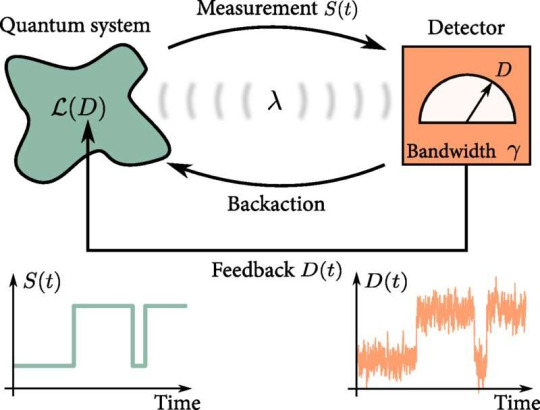
This ushers in a new age of quantum technology that allows for the exploitation of quantum effects.
A pacemaker is a prime example of a common technology that often employs feedback control since it must continuously monitor the user's heartbeat and only apply electrical impulses to regulate it when necessary.
However, quantum feedback control is still not fully understood by physicists.
The "master equation" that scientists have now created will aid engineers in comprehending feedback at the quantum scale.
Physical Review Letters, a publication, has published its findings.
According to co-author Björn Annby-Andersson, a quantum physicist at Sweden's Lund University, "It is crucial to investigate how feedback control can be used in quantum technologies in order to develop efficient and quick methods for controlling quantum systems, so that they can be steered in real time and with high precision."
Quantum error correction is an illustration of an important feedback-control procedure in quantum computing.
A quantum computer stores information on actual qubits, which might be, for example, atoms or light photons.
However, due to the qubits' delicate quantum characteristics, it is possible that if they are jarred by vibrations or fluctuating electromagnetic fields, the encoded information will be lost.
Therefore, physicists must be able to recognize and fix such mistakes, for example, by using feedback control.
By monitoring the qubits' state and using feedback to rectify any deviations from expectations that are found, this error correction may be put into practice.
However, because of the fragility that physicists are attempting to counteract, feedback control at the quantum level poses special difficulties.
Due to its fragile nature, the system might be destroyed even by the feedback process.
According to Annby-Andersson, "it is crucial to only interact weakly with the measured system, keeping the qualities we wish to exploit."
Therefore, it is crucial to build a complete theoretical knowledge of quantum feedback control in order to determine its basic bounds.
However, the majority of the theoretical models for quantum feedback control now in use rely on computer simulations, which normally can only provide precise findings for certain systems.
Drawing broad, high-quality conclusions is challenging, according to Annby-Andersson.
Only a small class of feedback-controlled systems—often referred to as linear feedback—may benefit from the few models that can provide qualitative comprehension.
A "Quantum Fokker-Planck equation," created by Annby-Andersson and his associates, allows physicists to follow the development of any quantum system over time with feedback control.
According to Annby-Andersson, "the equation may explain circumstances that go beyond linear feedback." In instance, solving the equation without the use of computer simulations may be done using paper and a pen.
The group put its equation to the test by using it with a simple feedback mechanism.
This revealed how energy may be captured in tiny systems via feedback control and proved that the equation yields physically plausible outcomes.
The equation, according to Annby-Andersson, "is a good starting point for future investigations of how energy may be modified with the use of information on a microscopic level."
The team is now looking on a technique for controlling energy in "quantum dots"—tiny semiconducting crystals about billionths of a meter across—by using feedback.
The development of innovative feedback protocols that may be applied to quantum technologies using the equation as a tool is one significant future avenue, according to Annby-Andersson.
~ Jai Krishna Ponnappan.
Find Jai on Twitter | LinkedIn | Instagram
References And Further Reading:
Björn Annby-Andersson et al, Quantum Fokker-Planck Master Equation for Continuous Feedback Control, Physical Review Letters (2022). DOI: 10.1103/PhysRevLett.129.050401
#Quantum Computing#Quantum Computing Equation#Quantum Research#Quantum System#quantum physics#physics
1 note
·
View note
Text
Superfluorescent Light Pulses Are Emitted At Normal Temperature By "Naturally Insulating" Materials That Could Be Used In Quantum Computing Applications
Instead of producing a brighter and more stable nanoparticle for optical applications, scientists discovered that their product had a more unexpected characteristic: bursts of superfluorescence that happened at normal temperature and at regular intervals.
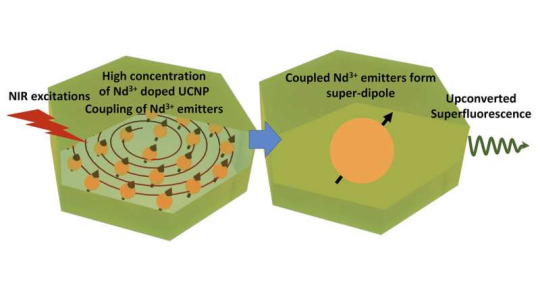
Superflorescence at ambient temperature.
The research might result in a variety of biological investigations as well as the creation of quicker microchips, neurosensors, or materials for use in quantum computing applications.
When the atoms of a substance coordinate and simultaneously release a brief but powerful flash of light, this is known as superfluorescence.
Although crucial for quantum optical applications, the characteristic is exceedingly challenging to get at room temperature and for long enough durations to be of use.
The study team created the substance in issue, lanthanide-doped upconversion nanoparticle, or UCNP, in an endeavor to produce an optical substance that was "brighter".
They created hexagonal ceramic crystals with sizes ranging from 50 nanometers (nm) to 500 nm, tested their lasing capabilities, and made a number of significant advances.
When one atom emits light, another is stimulated to produce more of the same light, a phenomenon known as lasing occurs.
Instead, they discovered superfluorescence, in which all of the atoms align first and then emit at the same time.
According to co-corresponding author Shuang Fang Lin, an associate professor of physics at North Carolina State University, "we observed that the material generates three pulses of superfluorescence at consistent intervals for each excitation when stimulated at varied laser intensities." "And the pulses don't shorten; each pulse lasts for two nanoseconds.
Therefore, the UCNP not only displays superfluorescence at ambient temperature, but it also does so in a regulated manner.
Because it is difficult for atoms to emit together without being "kicked" out of alignment by their surroundings, room temperature superfluorescence is challenging to produce.
However, in a UCNP, the light is produced by electron orbitals that are "hidden" under other electrons.
This shielding effect enables superfluorescence to occur even at normal temperature.
Additionally, the superfluorescence at UCNP is anti-Stokes shifted, which means that the light wavelengths that are released are shorter and more energetic than the light wavelengths that trigger the reaction.
According to Gang Han, a professor of biochemistry and molecular biotechnology at the University of Massachusetts Chan Medical School and a co-corresponding author of the study, "Such intense and rapid anti-Stokes shift superfluorescence emissions are perfect for many pioneering materials and nanomedicine platforms."
In biological applications such as background noise-free biosensing, precision nanomedicine, deep tissue imaging, cell biology, ocular physiology, and optogenetics, for instance, the UCNPs have been extensively exploited.
"However, a drawback of the present UCNP applications is their delayed emission, which often leads to difficult and inefficient detection.
However, the anti-Stokes shift superfluoresence's speed, which is 10,000 times quicker than the present approach, completely changes the game.
We think that our superfluorescence nanoparticle offers a ground-breaking approach to bioimaging and phototherapies, which now lack a pure, quick, and intense light source.
Due to its special characteristics, UCNP may find utility in a wide range of applications.
According to Lim, "room temperature operating greatly simplifies applications." This is also the tiniest superfluorescent material that is presently available at 50 nm.
We might utilize these crystals as timers, neurosensors, or transistors on microchips since we can regulate the pulses.
Additionally, larger crystals could enable us to have even more control over the pulses.
Room Temperature Upconverted Superfluorescence is the title of the article that appears in Nature Photonics.
~ Jai Krishna Ponnappan.
Find Jai on Twitter | LinkedIn | Instagram
References And Further Reading:
Kai Huang et al, Room-temperature upconverted superfluorescence, Nature Photonics (2022). DOI: 10.1038/s41566-022-01060-5
1 note
·
View note
Text
Research Highlights Internet Benefits of Quantum-Enabled Communications.
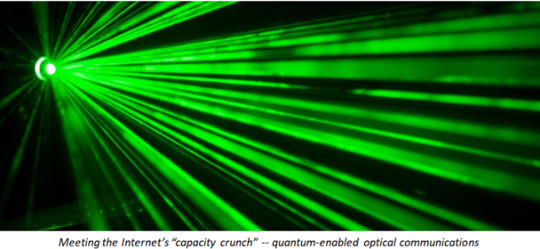
Laser light is utilized on the Internet to deliver signals to their intended locations.
Such optical connections made broadband accessible and allowed for the creation of the global Internet.
However, the optical backbone for international networks is getting close to a "capacity crunch" due to the transfer of massive volumes of data.
Energy and bandwidth efficiency optimization of quantum-enabled optical communication channels, published in Nature's npj Quantum Information, describes how NIST, University, and Joint Quantum Institute researchers demonstrated a potentially more effective method of performing optical communications to help solve this issue.
Researchers compared existing optical communications to quantum-enabled optical communications.
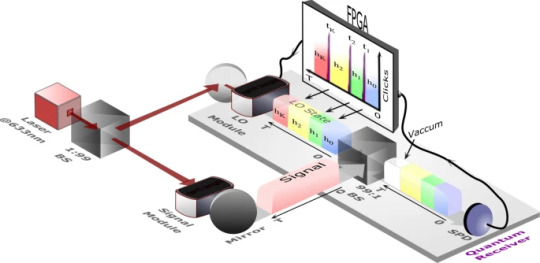
Three alternative quantum-enabled laser pulse modulations that were designed to be energy and bandwidth effective were created by researchers.
Researchers sent messages with varied alphabetic letter lengths using these modulations in a testbed created specifically for this experiment.
These were sent to a quantum receiver, which continually gauges the message's dependability and fixes any flaws.
The three laser pulse modulations were then evaluated for message precision, energy efficiency, and bandwidth efficiency, and compared to the state-of-the-art optical communications.
Researchers discovered that extended message transmission using quantum-enhanced optical communications demonstrated a considerable advantage over optical communications today.
The "hybrid frequency-phase shift keying" (HFPSK) technique outperformed the other two quantum-enabled laser pulse modulations in terms of lengthy message accuracy as well as energy and bandwidth efficiency.
Researchers hope that their findings will further knowledge of the characteristics of the quantum measurement as well as the creation of optical communication systems that can use quantum technology.
~ Jai Krishna Ponnappan.
Find Jai on Twitter | LinkedIn | Instagram
References And Further Reading:
Jabir, M.V., Annafianto, N.F.R., Burenkov, I.A. et al. Energy and bandwidth efficiency optimization of quantum-enabled optical communication channels. npj Quantum Inf 8, 63 (2022). https://doi.org/10.1038/s41534-022-00573-9
#Quantum internet#Quantum enabled communication#Internet#optical communication systems#quantum-enabled laser pulse
0 notes
Text
Researchers Use Distant, Synchronized Network Nodes to Show Quantum Entanglement.
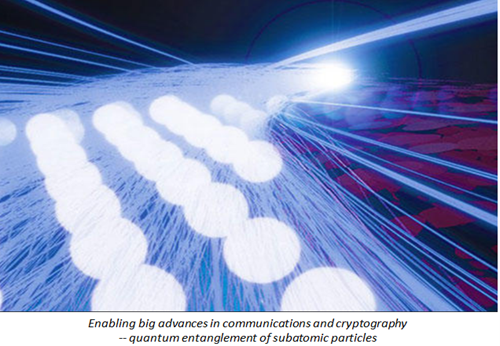
The phenomenon known as "entanglement" is what gives quantum communications their potential enabling significant development in cryptography and communications.
It entails the connection of two or more subatomic particles, such as photons, even though they are separated by a great distance.
These subatomic particles also exhibit associated properties like spin and polarization.
Furthermore, regardless of how far away another particle is, if you know the state of one, you will also know the state of all linked particles.
Quantum entanglement thus heralds significant developments in communication and cryptography.
Recently, researchers entangled two photons at a third node using two quantum networks that were far apart and time-synchronized.
The findings were published at the Conference on Lasers and Electro-Optics in May 2022 as White Rabbit-assisted Quantum Network Node Synchronization with Quantum Channel Coexistence.
In a lab, it is considerably simpler to entangle two photons than it is to use two quantum nodes that are linked by a fiber network but are located kilometers away.
The time it takes for the two photons to reach the third node must be less than the time it takes for the photons to become entangled; depending on the circumstances, this might be many nanoseconds, picoseconds, or even femtoseconds.
The "White Rabbit" Ethernet-based time transmission system, which consists of a "leader rabbit" and a "follower rabbit" at each node, was used to synchronize the two nodes by NIST researchers.
With more than 90% probability, the White Rabbit system consistently assisted in synchronizing the two nodes to within four picoseconds and allowed photon entanglement.
The tests also demonstrated the coexistence of quantum and White Rabbit signals on the same wire.
~ Jai Krishna Ponnappan
Find Jai on Twitter | LinkedIn | Instagram
1 note
·
View note
Text
Quantum Computing Applications With Black-hole Lasers.

A soliton (top) performing the function of a mirrored laser cavity (bottom).
Haruna Katayama of Hiroshima University in Japan has developed an electromagnetic counterpart for a black hole laser - a technology that could possibly enhance Hawking radiation from a black hole's event horizon and make it detectable.
The concept stems from parallels shown with Bose-Einstein condensates, and it has the potential to provide fresh light on the link between quantum mechanics and gravity.
The gadget, if created, may potentially progress technologies like quantum computing.
When the two fundamental foundations of current theoretical physics – general relativity and quantum mechanics – collide, Hawking radiation is one of the few potentially observable predictions.
Quantum theory predicts the formation of photon pairs near a black hole's event horizon.
One of the photons with negative energy enters the black hole and vanishes.
The other, who has good energy, flees into space.
This phenomenon would allow black holes to emit radiation, giving them a temperature that could be measured - potentially revolutionary since it would imply they possessed internal degrees of freedom.
Unfortunately, all known black holes would have temperatures lower than the cosmic microwave background.
The produced radiation would be obscured by the absorbed radiation, making it unobservable.
However, in 1981, William Unruh of the University of British Columbia in Canada demonstrated that multiple physical systems are mathematically similar to the one that generates Hawking radiation, allowing the phenomenon to be explored in the lab.
Water waves, fiber-optic systems, and Bose-Einstein condensates are examples of analogies.
"[These analogies] aren't going to go to the core of any quantum gravity topic since that's outside the regime one is examining here," says theoretical physicist Miles Blencowe of Dartmouth College in the United States, "but there are still serious concerns with Hawking's calculation." These analogues may be compared to quantum simulators in several ways."
Different "analogue gravity" systems have raced to deliver the first proof of Hawking's numerous predictions, and claims made by one group have often been challenged by others.
Katayama claims in the new paper that one of Hawking's most intriguing predictions, made in 1999 by Steven Corley of the University of Alberta in Canada and Ted Jacobsen of the University of Maryland in the United States, may be tested in a superconducting electric circuit.
The pair described how a black hole laser works, which necessitates the presence of a "white hole" inside the black hole.
Negative energy photons are reflected back towards the black hole horizon by the white hole's inner horizon, where they are unable to escape and are reflected back.
As photons bounce across horizons, their energy becomes more negative, forcing the energy of photons sent into space to become increasingly positive.
"One of these is exceedingly unlikely to be realized in nature," Blencowe argues, "but it is conceivable to produce them in analogies."
In a Bose-Einstein condensate, the first such black hole mimic was created in 2016.
Katuyama suggests utilizing the Josephson phenomenon, which enables a superconducting current to become quantized, to generate a non-dispersive wavepacket termed a soliton in a metamaterial resonator, with radiation in the soliton becoming quantum-mechanically entangled with radiation emitted from the soliton.
Hawking radiation is the equivalent of this released radiation.
"Unfortunately, at this time, we have not been able to offer recommendations with this system that outperform other [analogue] systems," Katuyama adds.
"However, the suggested superconducting quantum device has shown the dynamic Casimir effect, which is the dynamic fluctuation of the vacuum, and the photon detecting technology established in this system is a tremendous advantage that cannot be reproduced by other systems."
Furthermore, since it is based on nanotechnology, this system is very controllable.
As a result, by manipulating the circuit settings, we can move the black hole from the classical to the quantum domain, allowing us to investigate the quantum pair production of black holes and white holes from a vacuum."
“Systems very close to this have been realized: they're very important as very sensitive detectors of microwave photons and they're very important in superconducting quantum bits,” says Blencowe;
“If the proposals are realized, it would be a very clean demonstration of the Hawking effect – the signal is relatively large.”
He also sees a lot of potential for technology transfer:
"Quantum computing is all about creating entanglement as a resource," he says, "so entangled microwave photons created via these sorts of technologies might be quite valuable."
- Jai Krishna Ponnappan
TechnologistsInSync.com
0 notes
Text
Chinese Light-Based Quantum Computing

Chinese researchers have made substantial advances in both superconducting quantum computing and light-based quantum computing, making China the world's only nation to gain quantum advantage in both physical systems.
According to CCTV, a research team from the Chinese Academy of Sciences' Center for Excellence in Quantum Information and Quantum Physics has built a 66-qubit programmable superconducting quantum computer prototype named "Zuchongzhi 2.1" after the noted 5th century Chinese mathematician and astronomer.
"Zuchongzhi 2.1" is 10 million times faster than the current fastest supercomputer and has a computation complexity over 1 million times that of Google's Sycamore processor, marking the first time China has achieved quantum advantage in the superconducting system.
Meanwhile, another research team developed "Jiuzhang 2.0," a new light-based quantum computer prototype with 113 photons and 144 modes that can solve specific problems at a speed of septillions of times faster than a supercomputer, and improved the light-based quantum computing prototype's programming computing capability.
Zu Chongzhi, a 62-qubit programmable superconducting quantum processor, was successfully built by a Chinese research team from the University of Science and Technology of China (USTC) in May.
- Jai Krishna Ponnappan
TechnologistsInSync.com
0 notes
Photo
TechnologistsInSync.com
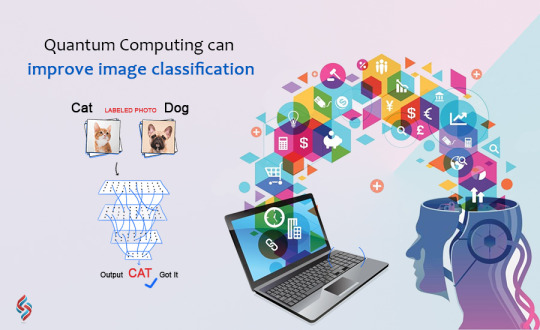
Google researchers are using quantum computing to classify 28-pixel-by-28-pixel images. Apart from improving image classification, researchers are working to find out how quantum mechanics can solve other AI problems.
1 note
·
View note
Link
TechnologistsInSync.com
Quantum Computing is used for the calculation that is based on the probability of an object’s state before it is measured rather in 0 or 1. It means that this computing have the potential to make process sharply with huge data as compared to classical computers. Quantum computers are machines that use the properties of quantum physics just to store the information and act computations. Focus of this quantum computing is on developing computers technology which is based on the principle of quantum theory. That theory explains the behaviors of energy and material on the levels of atomic and subatomic molecule. Classical computers perform logical operations that use the fixed position of a physical state. There operations are based on one of two situations such as on or off or 0 and 1. now let’s talk about the advantages of quantum computing.
1 note
·
View note
Link
TechnologistsInSync.com
Google reportedly attains ‘quantum supremacy’. This is the kind of thing I ordinarily wouldn’t report, since my attitude is “I’ll believe it when I see it” (or something like that). But since everyone’s talking about it, I figured I should post and comment on it.
“A Google research paper was temporarily posted online this week, the Financial Times reported Friday, and said the quantum computer’s processor allowed a calculation to be performed in just over 3 minutes. That calculation would take 10,000 years on IBM’s Summit, the world’s most powerful commercial computer, Google reportedly said.”
“Google researchers are throwing around the term 'quantum supremacy’ as a result, the FT said, because their computer can solve tasks that can’t otherwise be solved. 'To our knowledge, this experiment marks the first computation that can only be performed on a quantum processor,’ the research paper reportedly said.”
According to the paper (which was taken down, but not before somebody posted a clumsy cut-and-paste of it) , what the Google quantum computer did was simulate a pseudo-random quantum circuit. Which I never heard of but apparently the quantum superposition in the quantum circuit makes it hard to simulate on a classical computer. I was expecting something like number factorization (Shor’s Algorithm). I have no idea what a pseudo-random quantum circuit is good for.
The Google quantum computer is claimed to do this with 53 qubits, though the article mentions Google has claimed to have built a built a different quantum computer with 72 qubits. IBM has its own 53-bit quantum computer, and claims that theirs is a general-purpose computer, unlike the one Google used here which was designed specifically for this experiment (simulating a pseudo-random quantum circuit).
2 notes
·
View notes